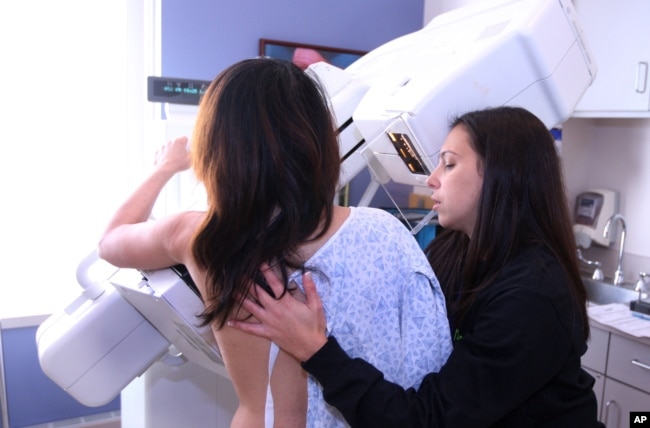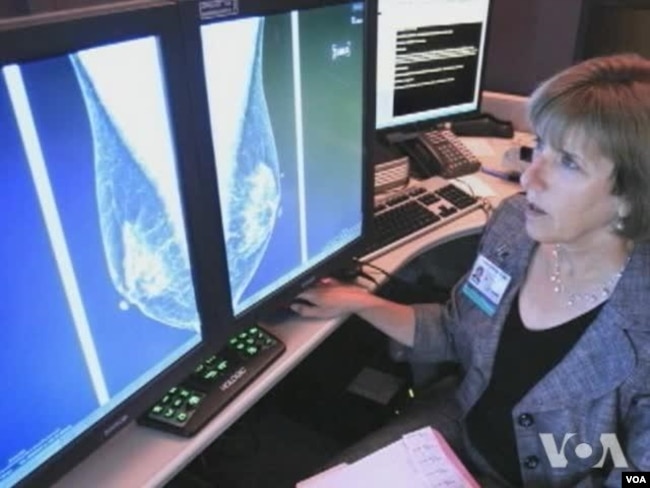Navigation
Install the app
How to install the app on iOS
Follow along with the video below to see how to install our site as a web app on your home screen.

Note: This feature currently requires accessing the site using the built-in Safari browser.
More options
You are using an out of date browser. It may not display this or other websites correctly.
You should upgrade or use an alternative browser.
You should upgrade or use an alternative browser.
Mammograms and pap smears - a peek at obamacare and discrimination against women.
- Thread starter acts
- Start date
Why is the obama left attacking women?
They want to save money in order to pass their plan which includes a public option.
Trouble is, over 50% of Americans are women , you do this, you lose their support and that is guaranteed. I can't tell you how many women I know that would not be here today had they not had a mammogram or pap smear at an early age. If I had my way I would see women doing mammograms at 35, to me 40 is late.
This 50 stuff will be thrown out of the bill or it will lose support in both houses.
we have already had a thread on this....
But this does NOT save the government any money. People on MEDICARE are NOT affected because, they are seniors, 65 and older.
The insurance companies should save a bundle though....or so they probably think.
my insurance company last year already had changed their benefit to 50 years old....for the annual check up unless breast cancer runs in your family.
But this does NOT save the government any money. People on MEDICARE are NOT affected because, they are seniors, 65 and older.
The insurance companies should save a bundle though....or so they probably think.
my insurance company last year already had changed their benefit to 50 years old....for the annual check up unless breast cancer runs in your family.
Granny says, "Dat's right, ladies - get yer mammograms a-fore yer boobs melt...

Study to Determine if 3-D Mammograms Produce Better Results
December 08, 2017 | WASHINGTON — Mammography has been a standard screening device for breast cancer since the mid-1970s. And the practice is credited with a 30 percent decline in death, thanks to early detection and treatment.

Study to Determine if 3-D Mammograms Produce Better Results
December 08, 2017 | WASHINGTON — Mammography has been a standard screening device for breast cancer since the mid-1970s. And the practice is credited with a 30 percent decline in death, thanks to early detection and treatment.
Now, many doctors are urging women to get a 3-D mammogram, which produces a more detailed view of the breast. But there has not been a large-scale study to determine if the technology actually provides a better outcome — until now. Women older than 50 are advised to get a mammogram every year or two to screen for breast cancer, the second leading cause of cancer deaths among women.
Comparing mammograms
A new study funded by the National Cancer Institute will compare traditional mammograms with the 3-D version to determine if the newer, often pricier choice really improves early detection of tumors. “It’s a new technology that has been FDA approved,” said Dr. Tova Koenigsberg of Montefiore Health Systems in New York. “But we don’t actually have studies that know whether in a large population 3-D actually helps.” Koenigsberg heads the project at Montefiore Einstein Center for Cancer Care, one of about 100 clinics participating in the five-year study. The clinics, spread across the United States, and a few in Canada, will soon enroll healthy women ages 45 to 74 who are planning to get a routine mammogram, including Sabitri Jaipersaud.

Jen Brodeur, right, a Tufts Medical Center mammographer, prepares Yan Ling Zhong of Boston for a digital mammogram, Oct. 23, 2010, at Tufts Medical Center in Boston.
After a doctor found what turned out to be a benign abnormality in her breast, she became diligent about annual mammograms and felt joining the study was important. “It immediately piqued my interest because I feel that all, all of us can benefit from this and for the future,” Jaipersaud said. The women in the study will be randomly assigned to get either the regular mammogram or the 3-D version for five years. Most will be screened annually but post-menopausal women who don’t have certain cancer risk factors will be screened every other year. A traditional mammogram takes an X-ray of the breast from top to bottom and side-to-side. “In a 3-D mammogram,” Koenigsberg said, “the camera actually sweeps at an angle and allows us to see the breast at different angles and projections.”
Known pros, cons
Doctors know that there are pros and cons to 3-D mammography, said Dr. Otis Brawley, chief medical officer of the American Cancer Society. “It might find disease that we need to find that two-dimensional does not,” Brawley said. “There’re potential cons in that it has a higher cost, higher amount of radiation, given every dose, every time a person has a test, as well as it may find a higher number of false positives.”

Mammograms are often considered the most powerful weapon in the war against breast cancer.
As for what type to choose, some insurers, including Medicare, cover the 3-D version, and a small number of states mandate coverage. Other insurers may require women to pay $50 to $100 more out of pocket. After collecting the result of every scan, biopsy and cancer at the end of the study, researchers hope to provide certainty about how often women should get mammograms, and which women would benefit most from which type.
Study to Determine if 3-D Mammograms Produce Better Results
Similar threads
- Replies
- 13
- Views
- 355
- Replies
- 163
- Views
- 2K
- Replies
- 3
- Views
- 142
- Replies
- 9
- Views
- 203
Latest Discussions
- Replies
- 13
- Views
- 23
- Replies
- 293
- Views
- 1K
- Replies
- 28
- Views
- 151
- Replies
- 566
- Views
- 5K
Forum List
-
-
-
-
-
Political Satire 8039
-
-
-
-
-
-
-
-
-
-
-
-
-
-
-
-
-
-
-
ObamaCare 781
-
-
-
-
-
-
-
-
-
-
-
Member Usernotes 468
-
-
-
-
-
-
-
-
-
-
